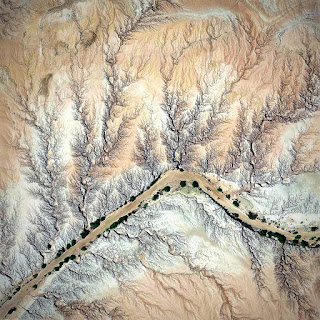(Click on image to enlarge and show thumbnails or scroll down.)
Las Vegas - December 2016
My second time to Las Vegas, but first for photography. Like all new places, one is overwhelmed by the unfamiliar landscape – in this case, cityscape and no usual cityscape. So, if these images seem eclectic, they are. They represent my first impressions of this unique visual wonderland. However, I did have a goal in mind – to avoid typical shots of LV. I found more photo opportunities around Fremont Street and its surrounding area where most this images were taken. I plan to go back and explore other areas of the city.
Mars
These images are part of much larger photos taken from the Mars Reconnaissance Orbiter. The High Resolution Imaging Science Experiment uses a camera capable of capturing the surface of Mars at a very high resolution. University of Arizona’s Lunar and Planetary Laboratory by Ball Aerospace & Technologies oversees the project and allows public access to the Mars pictures with one stipulation – credit. So, credit for these images goes to NASA/JPL/University of Arizona.
The challenge was to extract a portion of their photos and post process to create a unique landscape. The choice of using black and white was to accentuate the wonderful lighting already contained in the images. B&W also “neutralized” location, i.e. the images look like they may have been taken of earth. There is something incredible about the lighting on Mars. It may be how the sun reveals itself on objects further in space.
One may question the validity of creating an image from someone else’s work. I have come to justify it by how different my interpretation is from the original. An analogy may be photographing a building created by an architect, or photographing graffiti. Every time we capture a subject we are attempting to take a portion of a scene from a larger context and simplify its composition, be it nature, street scenes or extraterrestrial landscapes taken from an orbiting satellite.
(Click on image to enlarge and show thumbnails or scroll down.)
Google's Earth
We have seen those Iconic shots of earth as a small blue sphere and marveled at its beauty. Archibald MacLeish, an American poet said, “To see the earth as it truly is, small and blue and beautiful in that eternal silence where it floats, is to see ourselves a riders on the earth together, brothers on that bright loveliness in the eternal cold—brothers who know now they are truly brothers.”
From a closer view, Yuri Gagarin, first person in space, described earth looking from his space capsule as - “What beauty. I saw clouds and their light shadows on the distant dear earth…. The water looked like darkish, slightly gleaming spots…. When I watched the horizon, I saw the abrupt, contrasting transition from the earth's light-colored surface to the absolutely black sky. I enjoyed the rich color spectrum of the earth. It is surrounded by a light blue aureole that gradually darkens, becoming turquoise, dark blue, violet, and finally coal black.”
And even closer, but far from its surface, earth reveals countless features carved by nature or built by man. The book is a collection of images, found on Google Earth, showing a mere fraction of earths unusual sites from the beauty of a Yemen desert, to a strange land formation in Mongolia, or the exquisite design of the city of Dubai to the haunting aerial view of Auschwitz. These images show earth’s vast diversity from above ranging from 500 to several thousand feet.
Google Earth provides the tool for this exploration. One can spend innumerable hours searching earth’s 57 million square miles for exceptional compositions made by nature and man. Put into scale, San Francisco is 49 square miles offering numerous aerial views and is only 1/1,170,000 of earth’s landmass. On a standard monitor, at 1000’ above ground, Google Earth displays approximately 2.6 percent of one square mile. At that height, it would take 45 million displays to cover earth’s land.
If MacLeish and Gagarin were alive today they would marvel over Google Earth and its capability to show earth’s beauty and man’s impact and would question our stewardship of our small blue fragile sphere.
(Click on image to enlarge and show thumbnails or scroll down.)
Subscribe to:
Comments (Atom)




















































